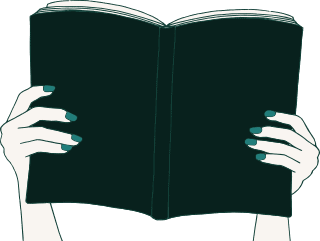YA fiction is well known for stories that explore identity and identity change. Aidan Chambers’ Postcards from No Man’s Land (1999) explores such themes by telling the story of Jacob, whose characterisation and development can be considered by means of intertextuality. By looking at which ‘texts’, stories, or socio-cultural narratives have an impact on Jacob’s identity, and by exploring how such jigsaw pieces fit together, his identity can be considered as a text itself, shaped by the intertexts in his socio-cultural environment. This analysis focuses on how Jacob’s process of identity development is empowered through the various intertexts with which he is presented over the course of Postcards’ narrative.
Duthoy, Leander. ‘A Three-Dimensional Jigsaw made of Pliable Bits: Adolescent Identity as an Intertextual Construct in AidanChambers’ Postcards from No Man’s Land (1999)’.
Children’s Literature in Education, vol. 52, 2021, pp. 326–341.
doi: 10.1007/s10583-020-09425-6
Just like people, books can’t always be put into one particular box. Especially when it comes to the status of children’s books and the borders surrounding these books, there has been much debate. Crosswriters such as Joke Van Leeuwen are not put off by such borders, and write for an array of ages: children and adults. However, a digital analysis of a large part of her oeuvre shows that there are differences to be found regarding the books marketed for different age groups. With only a few exceptions, the length of words and sentences rises, and the vocabulary varies more greatly the older intended readers get. There are also less child characters in books for older readers. Moreover, these child characters do not often speak in the books. The image presented of old people does stay roughly the same throughout Van Leeuwen’s oeuvre, based on close readings. The computer doesn’t reveal all about readers and reading. It is, however, a useful tool to discover patterns in a large number of books.
Geybels, Lindsey. ‘Over (de) grenzen: op zoek naar de lezer in het oeuvre van Joke van Leeuwen’.
Spiegel der Letteren, vol. 63, no.1–2, 2021, pp. 113–137.
doi: 10.2143/SDL.63.1.3289320
Age determines the form and content of children’s books in many ways. People havexed ideas about what is suitable for a particular age and what is not, and digital tools can help to map and ask questions about such age norms on a large scale. For this project, the computer ‘read’ 32 Dutch-language children’s books published between 1975 and 2018, and it appears that explicit comments are often made about age in children’s books. Not only do we pay attention to childhood in the project, other life stages are explored as well. It seems that children’s books guard age norms the most, but these comments are often coloured by conflicts, humour, and irony.
Joosen Vanessa. ‘Te kinderachtig voor de kinderen? Leeftijdsnormen in jeugdliteratuur digitaal onderzocht’.
Vooys: tijdschrift voor letteren, vol. 37, no.3, 2019, pp. 1–9.
Many books for children are about young characters. However, older characters are also often featured in stories for children, and characters’ ages can change throughout certain books. By reading such stories, children find out about ideas regarding age via books. Stereotypes such as the ‘old witch’, or the ‘wise old mentor’ spark ideas that old women are mean, or that old people are wiser than younger people. There are, however, just as well books that have the intention of distancing themselves from entrenched ideas. More and more attention is being given to intergenerational dialogue and a nuanced view of old age. Research on age in books and the ways in which readers deal with such images can show how children’s literature contributes to ideas on age.
Joosen, Vanessa. ‘Aging in children’s literature’.
Encyclopedia of gerontology and population aging, edited by Danan Gu and Matthew E. Dupre, Springer, 2022, pp. 280–284.
doi: 10.1007/978-3-319-69892-2_250-1
